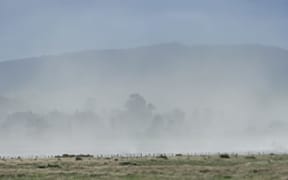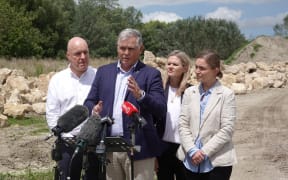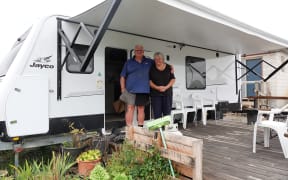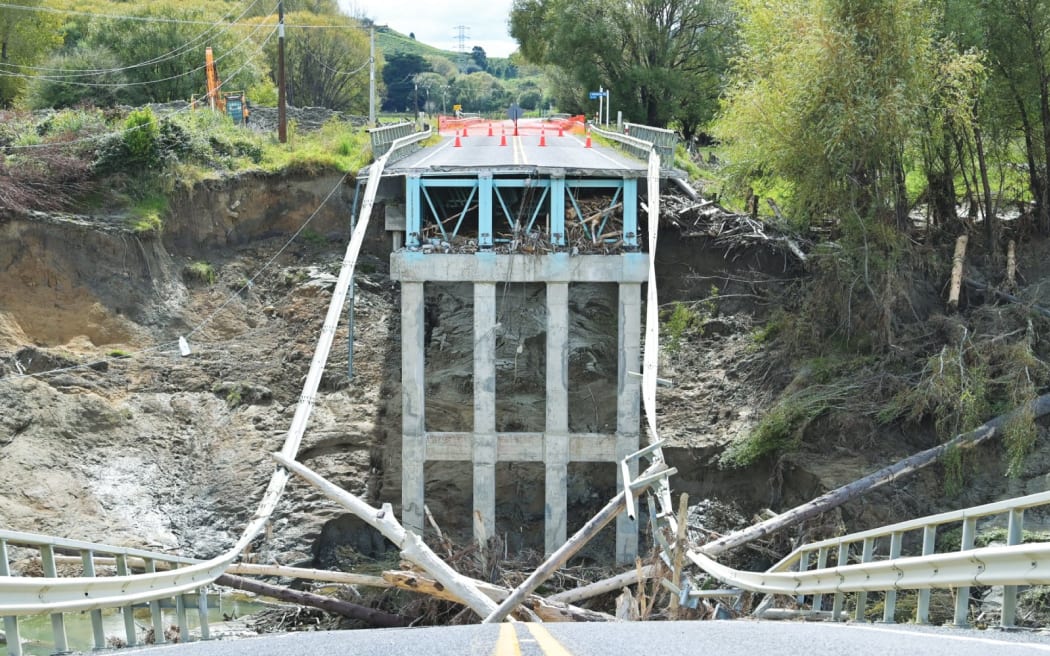
Bridges, water pipes and sewage systems were wiped out by the force of the hurricane when it hit Tai Rāwhiti last year. Photo: Liam Clayton / Gisborne Herald
Gisborne mayor Rehette Stoltz woke up at 4am on Tuesday 14 February to no power and no reception.
But it wasn't until she arrived at the Civil Defence headquarters that she realised the devastation Cyclone Gabrielle had wrought.
"We lost everything that could break," she said. "The water, the roads, the sewage systems, electricity."
Planning for Cyclone Gabrielle had begun the previous Thursday, but Stoltz said she had held out hope it might pass them by. But by Monday, it was clear the storm was coming their way.
The council declared a state of emergency, which allowed the police special powers, such as moving campers on to safety.
The worst hit that night.
"I remember driving in [the following morning] and hearing on national radio that there was no contact with Gisborne, but I was still none the wiser. And when I arrived, I was updated - there was absolutely nothing."

Gisborne's main water pipe has been significantly damaged during Cyclone Gabrielle, forcing the city into a water crisis. Photo: Supplied via LDR
From then on, Stoltz was doing up to 30 interviews a day, trying to get the message out to people. Residents wandered into the council building, confused and upset and looking for help.
Twenty thousand copies of the Gisborne Herald were hand-delivered by council staff and volunteers.
Journalists sat on the lawn outside the Civil Defence hub waiting for updates, until a large tent was put up for them to use. John Campbell crossed live to 1News at 6pm, while staff watched him through the window and on their laptop screens at the same time.
"It was daunting, but we had a clear plan," Stoltz said. "We had support from NEMA. We were ready because we started planning way before. In a certain sense, I think we were more prepared than other regions just because we have been through."
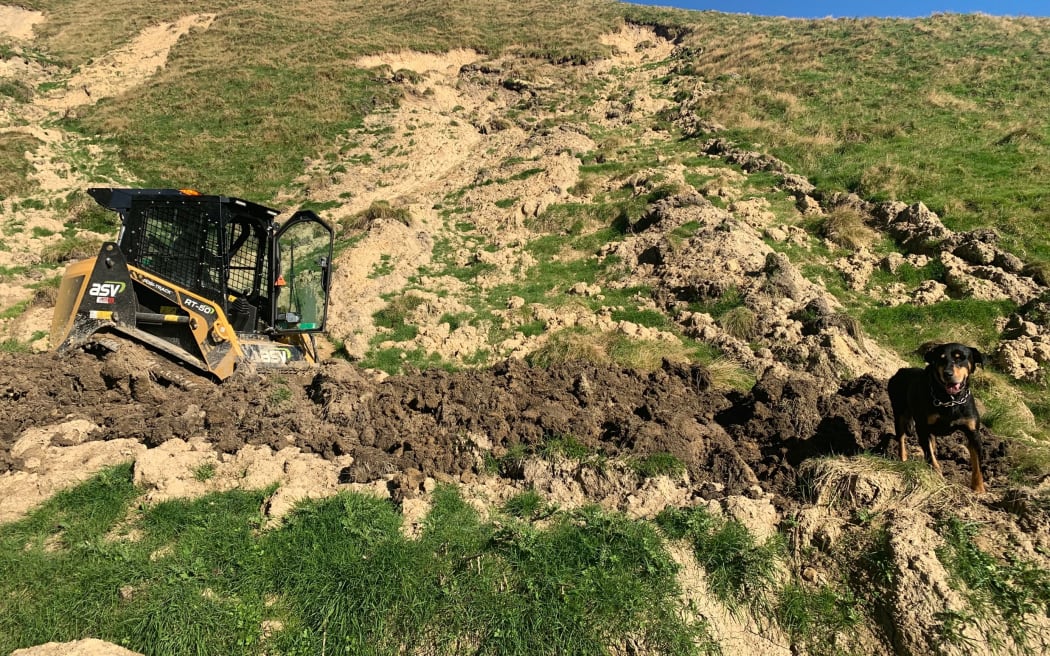
Repairs at Wharekōpae Pāmu farms after Cyclone Gabrielle caused massive damage in the area. Photo: Supplied / Pāmu
Even with all that preparation, it has still been a lot of work to clean the damage caused by the cyclone. Stoltz said the roads were steadily improving.
"At the end of January, Waka Kotahi resurfaced a huge area of State Highway 2 going north, and the same is going to happen going south, but a lot of work has happened in the Wairoa stretch," Stoltz said.
Residential buyouts were also underway, with nearly 60 families working with the council's recovery team on buyout agreements.
It was tough for families, Stoltz said.
"We have high deprivation in our region, high health needs, so for lots of people, owning a home or having a property, that is their life savings or something that will carry them through their retirement."
She said the recovery was a long-term undertaking, and the council was going back to basics - roading infrastructure, flood protection and drainage, and regulation. She said it could take up to a decade.
Woody debris and silt were still being cleared regularly as funding became available.
"We have been very clear with government what we need as a region," she said. "I cannot shut this region every time we have a wet weather event. It's unrealistic, it's unfair."
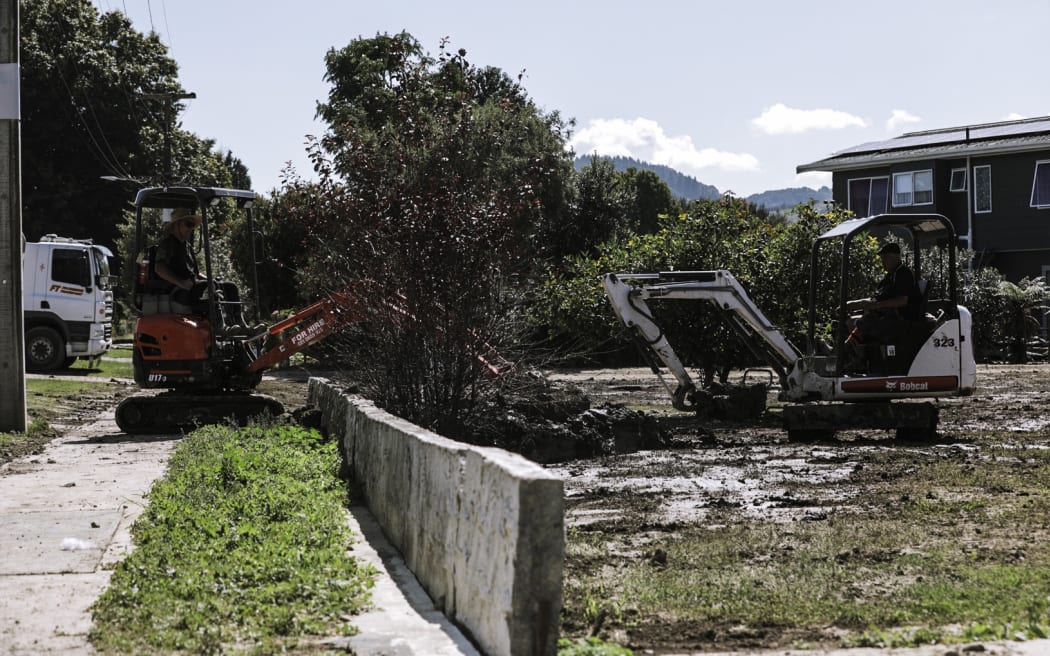
The clean-up at Te Karaka, north-west of Gisborne. Photo: RNZ / Samuel Rillstone
'If we can drive on the roads, then it's a good day'
Up the coast, the smaller communities were used to being self-sufficient, but their road - State Highway 35 - had been left with countless potholes and multiple slips which worsened every time it rained.
In Tokomaru Bay, Civil Defence coordinator Lillian Te-Hau Ward said it was beginning to look better, and whānau were getting back to normal.
The rainwater tanks for the town's drinking water were full, and roadworkers are by now a familiar sight.
"We've seen a lot of work done on our roads," she said. "We're of the opinion now that actually, if we can drive on the roads, then it's a good day."
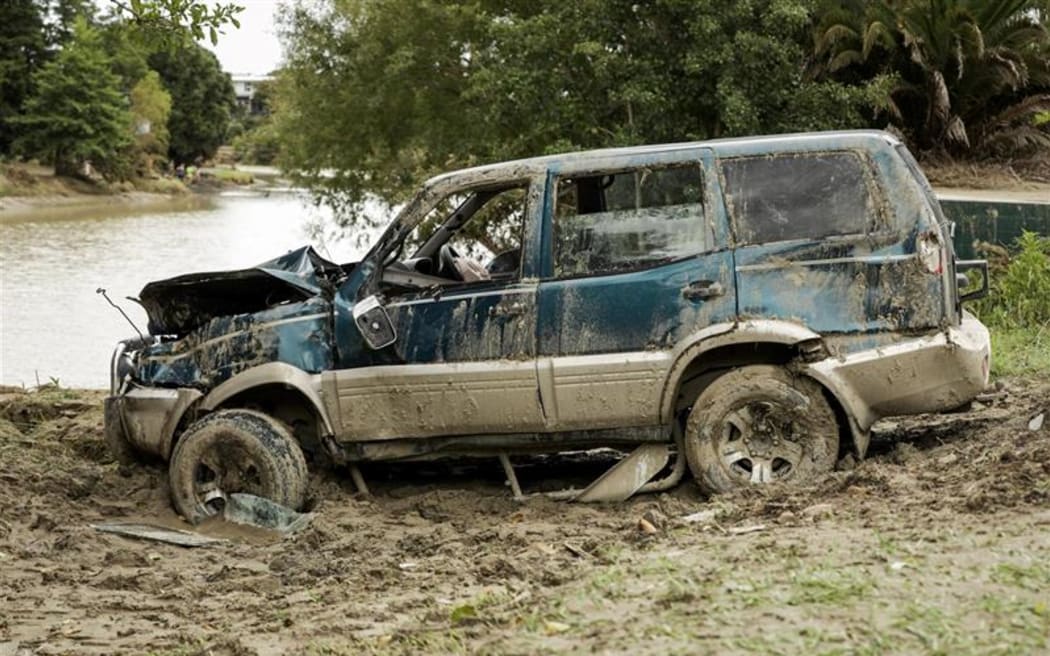
Flood damage around Gisborne last year. Photo: RNZ/Nathan McKinnon
A beach cleanup was held in December, and the burning of woody debris went on 24/7.
Communities were intent on equipping marae and residents with civil defence skills and equipment.
Further up the coast, at Te Puia Springs, Ngati Porou doesn't have an existing marae - places which so often double as Civil Defence hubs - so plans for a wellness centre capable of an off-grid response were underway.
Te Hau-Ward said various other marae were considering installing solar panels.
For the anniversary, Te Hau-Ward said, her community was throwing a bit of a "flash shindig", including a three course meal and entertainment - and she'd instructed those invited to dress up for the occasion, and "leave the Swanndris and gumboots at home".
In the forest
It has been a year of change for the forestry industry in the region. Widely blamed for the damage caused by woody debris carried down from forestry blocks in the hills, the industry went through a ministerial inquiry, which found many of their practices were unsustainable thanks to the region's particularly erosion-prone soil.
The rules changed in November, including a requirement for woody offcuts longer than two metres to be removed after harvesting from erosion-prone land.
Eastland Wood Council chief executive Philip Hope said forestry companies had spent much of their time cleaning up and mapping existing forestry blocks, in order to figure out if the land would be suitable for ongoing forestry.

Forestry slash on the beach at Gisborne after Cyclone Gabrielle. Photo: Supplied / Manu Caddie
Council consenting rules had tightened, too, which Hope said was a good thing.
"We need to have consent conditions that will help mitigate risks, and will be fit for purpose for the new weather impacts that we are increasingly having."
When it came to slash - the woody offcuts left behind after the logs are harvested - the industry needed to invest in ideas for its use, to encourage companies to remove it from slopes; for example, wood pellets which could be used as fuel.
"If we had wood processing where (slash) could be used, that would really help change the landscape," he said.
In some cases, removing great swathes of trees would cause worse erosion of the land, he said, but decisions had to be made about where was right to grow pine.
"I think we owe it to those communities living downstream that the trees that are most at risk are harvested sooner rather than later."

